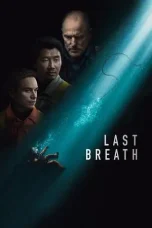In The Andromeda Strain (1971), Dr. Jeremy Stone describes the events presented to the United States Senate Committee on Space Sciences in 1971. Following the crash of a U.S. government satellite on February 5 in the small town of Piedmont, New Mexico, the majority of the residents are found dead. A military team from Vandenberg Air Force Base is dispatched to recover the satellite but meets a similar fate. Fearing that the satellite may have returned with an extraterrestrial organism, the military assembles a specialized group of scientists.
Dr. Stone, leading the team, along with surgeon Dr. Mark Hall, is airlifted to the site. They learn that the local doctor had opened the satellite in his office, resulting in his blood crystallizing into powder, a fate that has befallen most of the town’s population. Stone and Hall manage to retrieve the satellite and discover two survivors: 69-year-old Peter Jackson, an alcoholic, and a six-month-old infant named Manuel Rios, who is crying.
The specialized team comprises Dr. Charles Dutton and Dr. Ruth Leavitt, who arrive at a classified underground facility in Nevada, known as Wildfire. They undergo a series of four decontamination levels before reaching the fifth sub-level laboratories. In the event of a potential outbreak, the facility is equipped with an automatic nuclear self-destruct system designed to eliminate all infectious agents. According to the “odd man hypothesis,” Dr. Hall holds the sole key to deactivate this mechanism, based on the premise that an unmarried male is best suited to make critical decisions during emergencies.
Upon analyzing the satellite data, the team identifies a microscopic alien organism responsible for the fatalities. This green, pulsating entity is designated “The Andromeda Strain.” It infects through the respiratory system, leading to rapid death via blood clots in the brain and asphyxiation, indicating a high level of virulence. The team conducts experiments on the organism using animal models, electron microscopy, and various growth media to understand its behavior. The microbe possesses hydrogen and carbon essential for life on Earth and exhibits a crystalline structure, yet it lacks the DNA, RNA, proteins, and amino acids found in terrestrial organisms, converting matter into energy without any detectable byproducts.
Hall investigates the survival of two residents from Piedmont, unaware that Leavitt’s research on the germ is hindered by her hidden epilepsy.
A military jet crashes near Piedmont after the pilot reports that his plastic oxygen mask is melting.
Hall deduces that Jackson survived due to his acidic blood from consuming Sterno, while the baby’s survival is attributed to an alkaline blood pH from incessant crying, indicating that Andromeda can only thrive within a specific blood pH range.
As Hall makes this connection, the organism mutates into a non-lethal variant that deteriorates synthetic materials.
The Andromeda Strain breaches the biocontainment area and infiltrates the lab where Dutton is present, leading to the deterioration of the laboratory’s seals and triggering a five-minute countdown to nuclear annihilation.
Hall intervenes to help Leavitt during an epileptic seizure caused by the flashing red lights of Wildfire’s alarm system.
The team understands that the microbe could flourish on the energy released by a nuclear explosion, potentially evolving into a super-colony capable of annihilating all life on Earth. Hall urgently seeks a functional station to deactivate the nuclear bomb using his key, facing numerous assaults from automated lasers as he navigates the laboratory’s central core. He successfully reaches a working station, disables the bomb with mere seconds to spare, and then collapses from exhaustion.
Hall regains consciousness in a hospital, where his colleagues inform him that clouds are being seeded over the Pacific Ocean, which will lead to rain that washes Andromeda from the atmosphere into alkaline seawater, thus neutralizing the threat.
Stone concludes his testimony by stating that although they have managed to overcome the alien pathogen, future challenges may prove insurmountable. The film The Andromeda Strain (1971) culminates with a computer feed abruptly ceasing, displaying the number “601,” the Wildfire code indicating an influx of information too rapid for analysis.
Detail The Andromeda Strain (1971)
BioskopKaca21 – The Andromeda Strain is a science fiction thriller film from 1971, produced and directed by Robert Wise. The Andromeda Strain (1971) is adapted from Michael Crichton’s 1969 novel of the same title, with the screenplay crafted by Nelson Gidding. The cast includes Arthur Hill, James Olson, Kate Reid, and David Wayne, who portray scientists examining a lethal extraterrestrial organism.
The film of The Andromeda Strain largely adheres to the narrative of the book, with notable contributions from special effects designer Douglas Trumbull, and is recognized for its innovative use of split screen techniques in select scenes.
The Andromeda Strain achieved significant box office success, with a production budget of approximately $6.5 million. The film generated a gross of $12,376,563 in North America, resulting in theatrical rentals of $8.2 million in the United States. The Andromeda Strain (1971) ranked as the 16th highest-grossing film of 1971.
The film received two Academy Award nominations:
- Best Art Direction, awarded to Boris Leven, William H. Tuntke, and Ruby R. Levitt, but it did not win against Nicholas and Alexandra;
- Best Film Editing, for Stuart Gilmore and John W. Holmes, which it lost to The French Connection.
Additionally, it was nominated for the 1972 Hugo Award for Best Dramatic Presentation in the science fiction category, recognizing works from the calendar year 1971.





